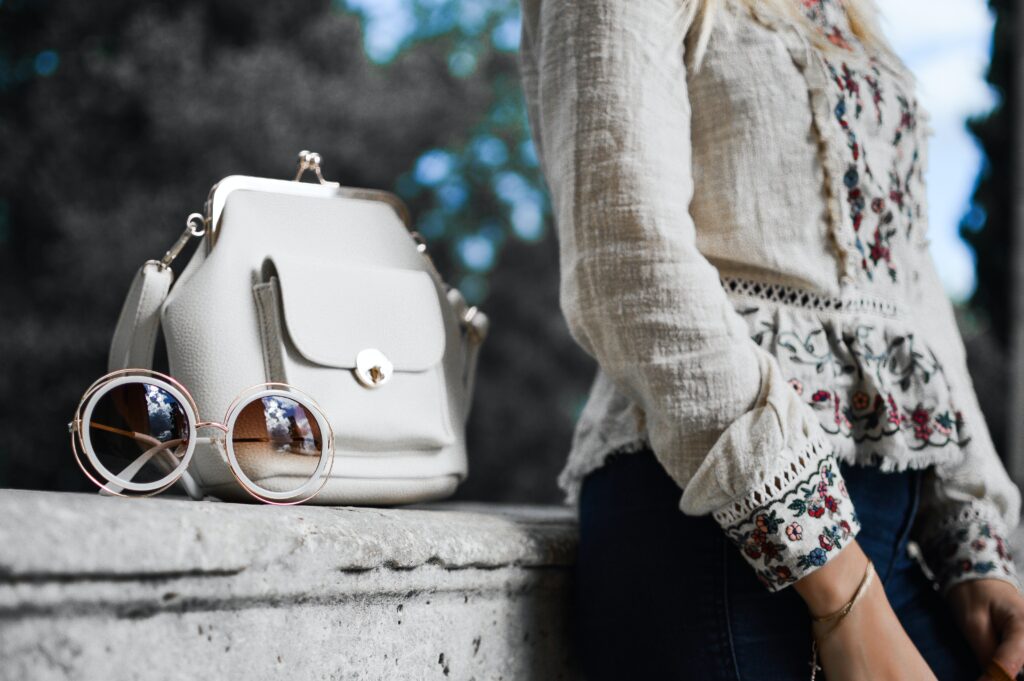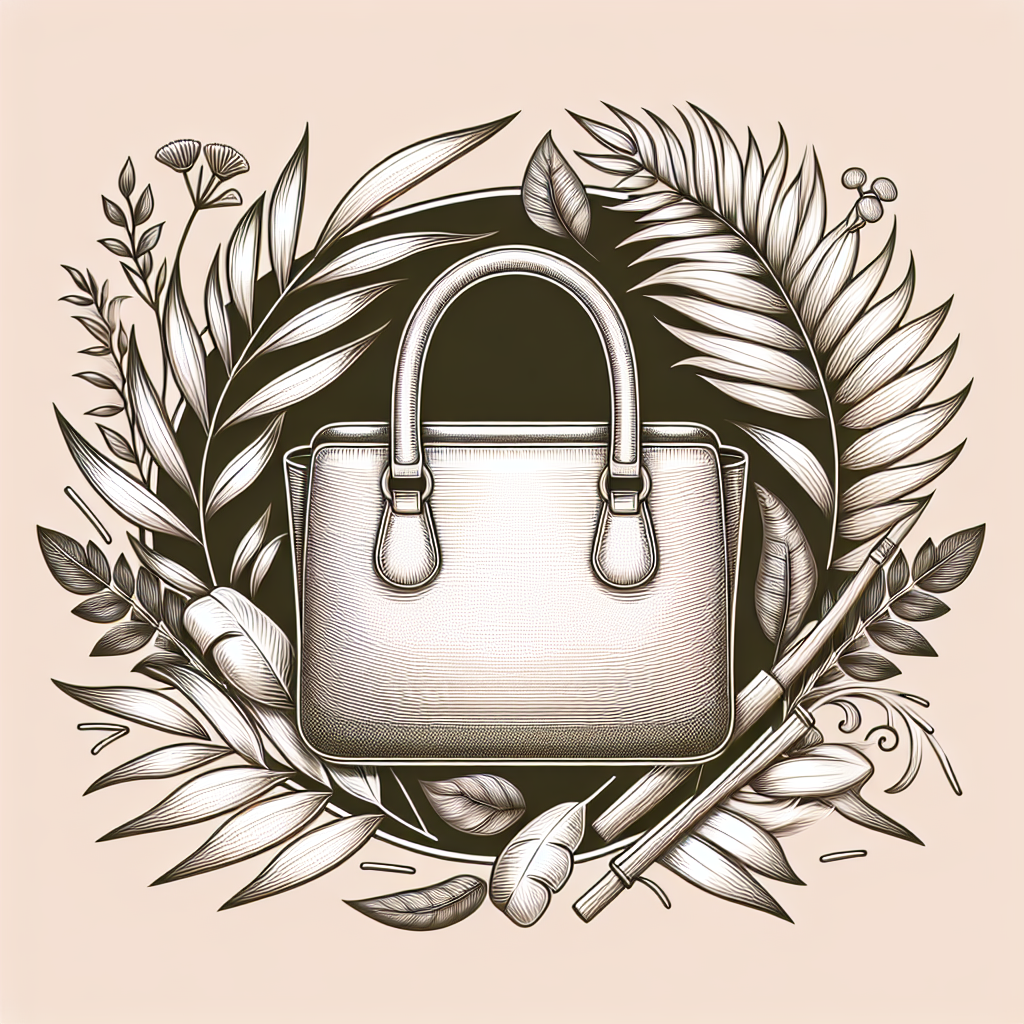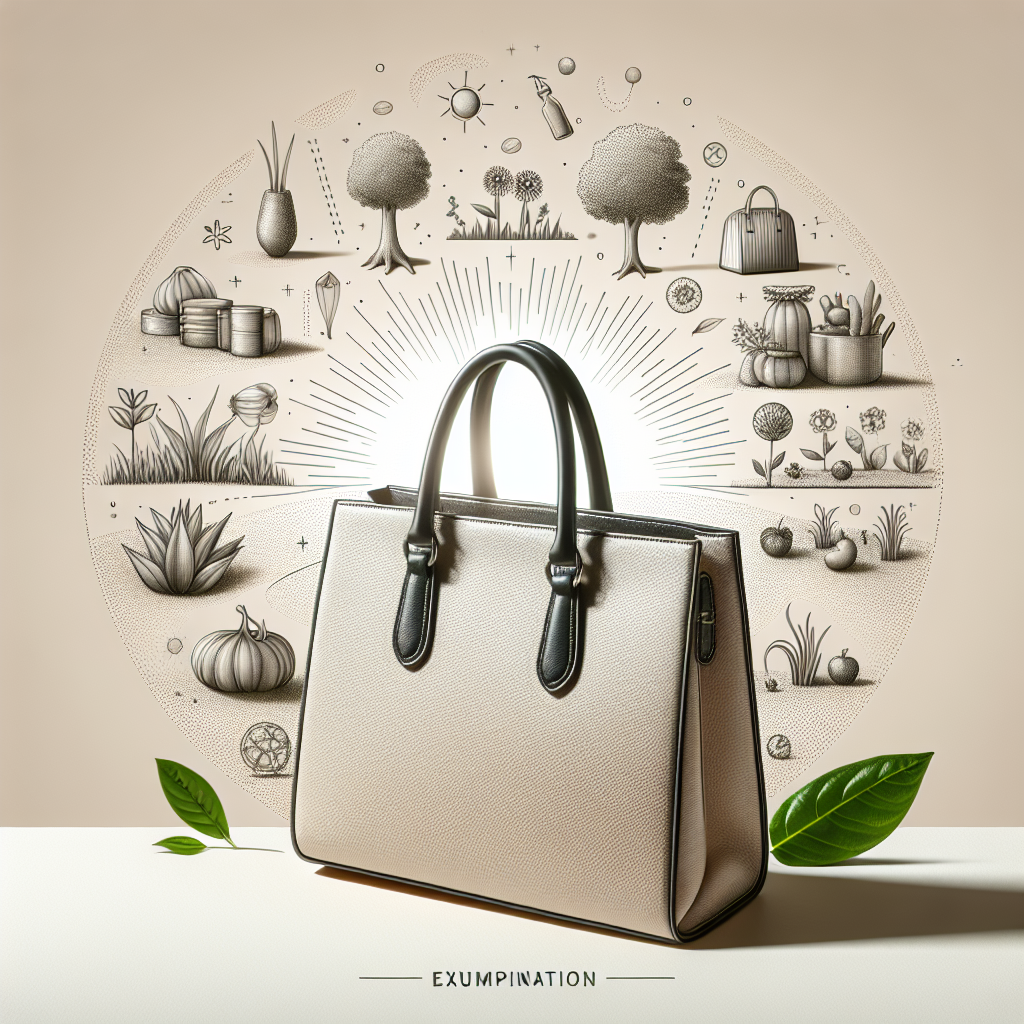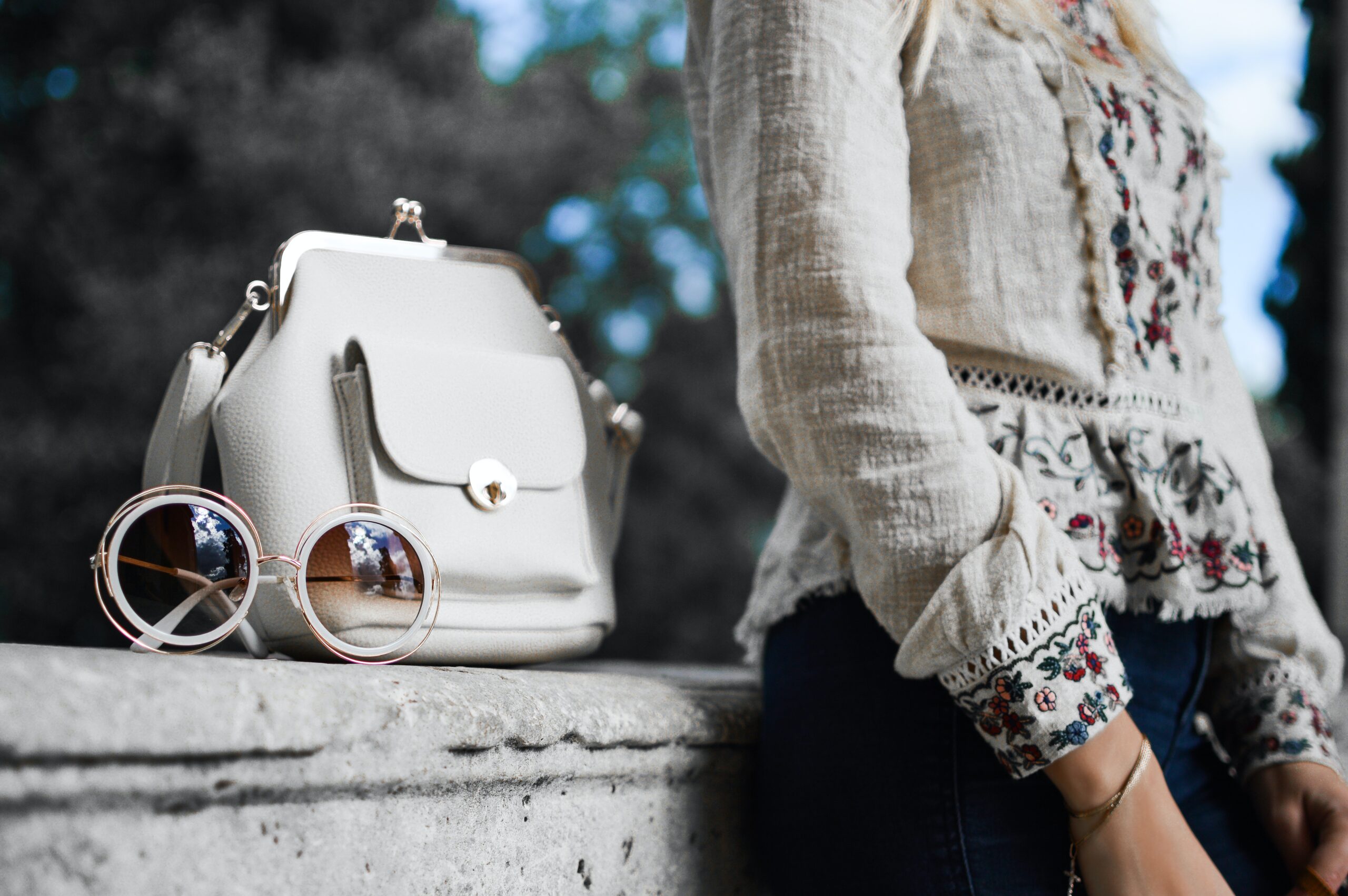Ladies and gentlemen, may we have your attention please! Today, we have something incredibly exciting to share with you – the world of vegan leather. Allow us to whisk you away on a captivating journey into a realm where style meets sustainability. In a world where the fashion industry is constantly evolving, vegan leather has emerged as a game-changer, offering a compassionate alternative to traditional leather while still exuding elegance and style. So, fasten your seatbelts and get ready to explore the innovative and eco-friendly world of vegan leather!

What is Vegan Leather?
Vegan leather, also known as faux leather, is a popular alternative to traditional animal-based leather. It is a synthetic material designed to mimic the look and feel of genuine leather, without using any animal products. Vegan leather can be made from a variety of materials, such as polyurethane (PU), polyvinyl chloride (PVC), plant-based materials, and recycled materials. It offers a cruelty-free and ethical alternative, is environmentally friendly, and comes in a wide variety of styles and designs.
Advantages of Vegan Leather
Cruelty-Free and Ethical Alternative
One of the primary advantages of vegan leather is that it provides a cruelty-free and ethical alternative to animal-based leather. Traditional leather is often obtained from animals raised for their skin, which involves various ethical concerns and causes harm to animals. Vegan leather, on the other hand, does not require any animal exploitation and allows individuals to enjoy stylish and high-quality products without contributing to animal suffering.
Environmentally Friendly
Another major advantage of vegan leather is its positive impact on the environment. Unlike traditional leather production, which involves the use of harmful chemicals and environmentally damaging practices, vegan leather is often manufactured using more sustainable processes. Additionally, vegan leather does not contribute to deforestation, as it does not require the rearing of livestock for their skin. By opting for vegan leather products, individuals can support sustainable practices and reduce their ecological footprint.
Wide Variety of Styles and Designs
Vegan leather offers a wide range of styles and designs to suit various preferences and fashion trends. As it is a synthetic material, it can be easily manipulated to achieve different textures, finishes, and colors. This versatility allows fashion designers and manufacturers to create innovative designs and meet the demands of consumers who prioritize both fashion and sustainability. Whether you prefer a classic leather look or a more unique and bold design, vegan leather offers endless possibilities.
Disadvantages of Vegan Leather
Durability and Longevity
A potential disadvantage of vegan leather is its durability and longevity compared to traditional animal-based leather. While animal-based leather is known for its durability and ability to age gracefully, vegan leather may not possess the same qualities. Depending on the specific material used, vegan leather products may be more prone to cracking, peeling, or fading over extended periods of use. However, advancements in technology and manufacturing processes have led to the development of more durable vegan leather options.
Limited Availability and Higher Cost
Compared to traditional leather, vegan leather may have limited availability and come at a higher cost. Animal-based leather has been long-established in the fashion industry and is readily available in a wide range of products. On the other hand, the production and adoption of vegan leather are still relatively new, resulting in a more limited selection of products. Additionally, due to the use of alternative materials and sustainable manufacturing processes, vegan leather products may be priced higher than their traditional leather counterparts. However, as the demand for vegan leather grows, availability and affordability are likely to improve.
Different Materials Used in Vegan Leather
Polyurethane (PU) Leather
Polyurethane (PU) leather is one of the most common materials used in vegan leather production. It is a synthetic material that can mimic the look and feel of genuine leather. PU leather is created by coating a fabric such as polyester or cotton with a polyurethane compound. This material is known for its softness, durability, and water resistance. Additionally, PU leather can be easily manipulated to achieve various textures and finishes, making it versatile for different fashion applications.
Polyvinyl Chloride (PVC) Leather
Polyvinyl chloride (PVC) leather, also known as vinyl leather, is another popular material used in vegan leather production. PVC leather is made by applying a layer of polyvinyl chloride to a fabric backing. It is known for its durability, flexibility, and resistance to abrasion. PVC leather can mimic the appearance and texture of genuine leather, making it a suitable alternative for various fashion and upholstery applications. However, it is worth noting that PVC production involves certain environmental concerns due to the use of chlorine and other chemicals.
Plant-Based Leather
Plant-based leather, also known as bio-based leather or vegetable leather, is an eco-friendly alternative to traditional leather. It is made from various plant-based materials such as pineapple leaves, cork, apple peels, and mushroom mycelium. These materials are processed and combined with other natural compounds to create a leather-like material that is both sustainable and biodegradable. Plant-based leather offers a cruelty-free and environmentally conscious option for those seeking sustainable fashion choices.
Recycled Materials
Another growing trend in vegan leather production is the use of recycled materials. This approach reduces waste and minimizes the environmental impact of manufacturing processes. Recycled materials can include a range of sources, such as discarded plastic bottles, car seats, or even old leather scraps. These materials are broken down, processed, and transformed into a new vegan leather material. By utilizing recycled materials, vegan leather manufacturers contribute to a circular economy and reduce the demand for new resources.

Polyurethane (PU) Leather
Manufacturing Process of PU Leather
The manufacturing process of PU leather starts with a fabric base, often made of polyester or cotton. The fabric is coated with a layer of polyurethane using various techniques, such as pouring or laminating. The polyurethane coating provides the characteristic leather-like texture, durability, and water resistance. The coated fabric is then treated and finished to achieve the desired appearance and quality. This can include processes such as embossing, buffing, or adding dyes and pigments.
Properties of PU Leather
PU leather possesses several properties that make it a popular choice for vegan leather production. It is known for its softness, flexibility, and ability to mimic the look and feel of genuine leather. PU leather is also highly durable and resistant to water, making it suitable for a variety of applications. Additionally, it can be easily manipulated to achieve a range of textures, colors, and finishes. These properties make PU leather a versatile option for fashion accessories, upholstery, and other leather-like products.
Polyvinyl Chloride (PVC) Leather
Manufacturing Process of PVC Leather
The manufacturing process of PVC leather involves applying a layer of polyvinyl chloride onto a fabric backing. The PVC is typically mixed with plasticizers and other additives to enhance its flexibility and durability. The coated fabric is then treated and finished to achieve the desired appearance and quality. This can involve processes such as embossing, printing, or adding pigments and dyes to create the desired color and texture.
Properties of PVC Leather
PVC leather is known for its durability and resistance to abrasion, making it suitable for various applications. It can mimic the look and texture of genuine leather, providing a realistic alternative. PVC leather is also highly flexible, allowing it to be easily manipulated and shaped for different fashion and upholstery purposes. However, it is important to note that the production of PVC involves the use of chlorine, which raises environmental concerns due to its potential impact on ecosystems and human health.

Plant-Based Leather
Materials Used in Plant-Based Leather
Plant-based leather is made from a variety of natural materials, including pineapple leaves, cork, apple peels, and mushroom mycelium. Pineapple leather, also known as Piñatex, is created from the fibers extracted from pineapple leaves. Cork leather is made by carefully harvesting the bark of cork oak trees. Apple leather utilizes waste from the apple industry, such as peels and cores, to create a leather-like material. Mushroom leather, also known as Mylo, is produced using the mycelium root structure of mushrooms. These plant-based materials offer renewable and sustainable options for vegan leather production.
Manufacturing Process of Plant-Based Leather
The manufacturing process of plant-based leather involves extracting fibers or materials from various plant sources and processing them into a leather-like material. For example, pineapple leaves are collected, the fibers are extracted and turned into non-woven mesh, and then the material is treated and finished to create a flexible and durable leather-like fabric. Similarly, cork bark is harvested, sliced, and compressed to create a material that can be used as a vegan leather substitute. The exact processes may vary depending on the specific plant source and desired outcomes.
Recycled Materials
Benefits of Using Recycled Materials in Vegan Leather
Using recycled materials in vegan leather production offers several benefits. First and foremost, it helps reduce waste and decreases the reliance on raw materials. By repurposing discarded materials such as plastic bottles or old leather scraps, vegan leather manufacturers contribute to a more sustainable and circular economy. Additionally, the use of recycled materials reduces energy consumption and greenhouse gas emissions associated with the production of new materials. Choosing products made from recycled vegan leather allows individuals to support eco-friendly practices and promote a more environmentally conscious lifestyle.
Examples of Recycled Materials Used in Vegan Leather
Vegan leather made from recycled materials can include a wide range of sources. One example is recycled plastic bottles, which are broken down, processed, and transformed into a synthetic material that mimics the look and feel of genuine leather. Another example is the use of old leather scraps, which are upcycled and combined with other materials to create a new vegan leather material. These innovative approaches to recycling contribute to the development of more sustainable and environmentally friendly vegan leather options.

How to Care for Vegan Leather
Cleaning Techniques
Caring for vegan leather is relatively easy and requires simple cleaning techniques. For day-to-day cleaning, gently wipe the surface with a damp cloth or sponge to remove dirt or stains. Avoid using harsh chemicals or abrasive materials that could damage the material. In case of more stubborn stains, mild soap or a specific vegan leather cleaner can be used. It is important to follow the manufacturer’s instructions and test any cleaning product on a small, inconspicuous area first.
Preventive Maintenance Tips
To maintain the quality and prolong the lifespan of your vegan leather products, there are a few preventive maintenance tips to keep in mind. Firstly, avoid exposing vegan leather to direct sunlight for prolonged periods, as this can cause fading or discoloration. Additionally, it is advisable to store vegan leather items in a cool, dry place to prevent moisture damage. Using a protective spray or conditioner specifically designed for vegan leather can help maintain its suppleness and prevent cracking. Regularly inspect and address any minor damages, such as loose threads or small scratches, to prevent them from worsening over time.
Popular Brands and Designers Using Vegan Leather
Brand A
Brand A is a renowned fashion brand that has embraced vegan leather as an ethical and sustainable alternative to animal-based leather. They offer a wide range of vegan leather products, including handbags, shoes, and accessories. Brand A prioritizes quality and craftsmanship, ensuring that their vegan leather products are made to last. With innovative designs and a commitment to cruelty-free fashion, Brand A has gained popularity among individuals seeking stylish and conscious choices.
Designer B
Designer B is a well-known fashion designer recognized for their innovative use of vegan leather in their collections. This designer pushes the boundaries of traditional fashion by creating unique and avant-garde pieces using vegan leather. Their designs showcase the versatility and creativity of vegan leather, offering a fresh perspective on sustainable fashion. Designer B’s commitment to cruelty-free and sustainable practices inspires and influences the wider fashion industry.
Brand C
Brand C is a sustainability-focused brand that incorporates vegan leather into their product offerings. Their commitment to using eco-friendly materials and supporting ethical manufacturing processes is reflected in their vegan leather products. Brand C offers a diverse range of stylish and functional items, from wallets to outerwear, all made with cruelty-free materials. By promoting vegan leather as a conscious choice, Brand C encourages consumers to make environmentally responsible purchasing decisions.
In conclusion, vegan leather is a cruelty-free and environmentally friendly alternative to traditional animal-based leather. It comes in various forms, including polyurethane (PU) leather, polyvinyl chloride (PVC) leather, plant-based leather, and recycled materials. Vegan leather offers advantages such as ethical sourcing, sustainability, and a wide variety of styles and designs. However, it may have disadvantages like potential durability issues and higher costs. With proper care, vegan leather products can maintain their quality and longevity. Popular brands and designers are embracing vegan leather, showcasing its versatility and contributing to the growing demand for ethical and sustainable fashion options. By choosing vegan leather, individuals can make a positive impact on animal welfare and the environment, all while staying stylish and compassionate.





